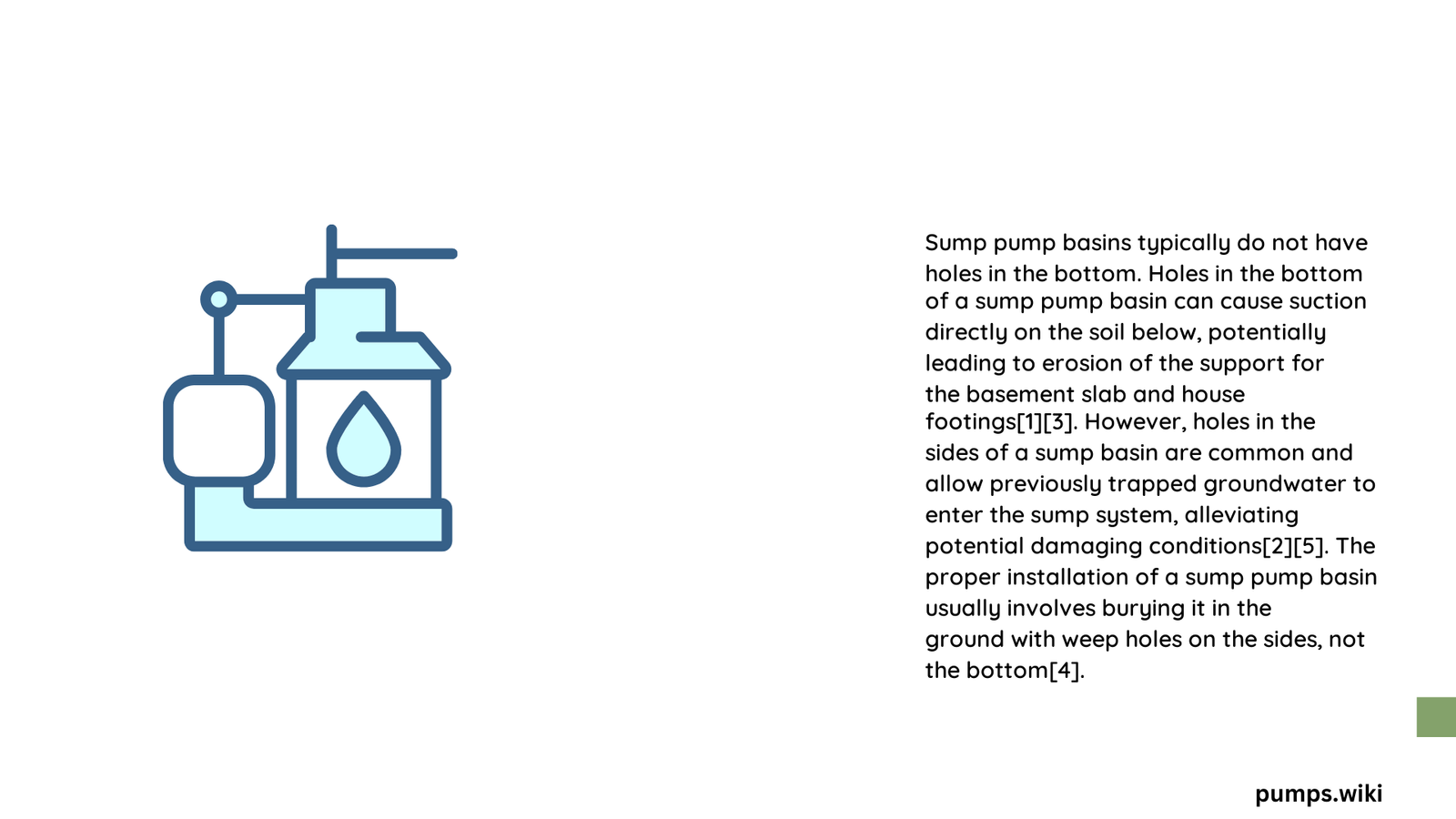Sump pump basins are engineered water management solutions designed with strategic perforations to collect groundwater effectively. These specialized containers feature carefully placed holes in the bottom and sides, allowing water to enter from multiple directions, preventing potential foundation damage and basement flooding. Understanding the purpose and functionality of these holes is crucial for homeowners seeking comprehensive water control strategies.
What Are Sump Pump Basin Holes?
Sump pump basin holes are intentionally designed perforations that serve a critical purpose in water management. These small openings allow groundwater to enter the basin from surrounding soil, enabling efficient water collection and removal.
Why Do Sump Pump Basins Need Holes?
| Purpose | Functionality | Benefit |
|---|---|---|
| Water Collection | Groundwater Entry | Prevents Foundation Damage |
| Drainage Management | Multiple Entry Points | Reduces Basement Flooding Risk |
| Pressure Equalization | Soil Water Redirection | Maintains Structural Integrity |
How Do Holes in Sump Pump Basins Work?
Sump pump basin holes operate through a sophisticated yet straightforward mechanism:
- Water Accumulation: Groundwater naturally flows toward the lowest point
- Hole Penetration: Small perforations allow water to enter the basin
- Collection Process: Water accumulates in the basin
- Pump Activation: Sump pump removes collected water
What Are the Characteristics of Sump Pump Basin Holes?
- Size: Typically 1-2 millimeters to 2 inches in diameter
- Material: Designed to prevent soil intrusion
- Distribution: Strategically placed on sides and bottom
- Quantity: Multiple perforations for comprehensive water management
Where Are Sump Pump Basin Holes Located?
Sump pump basin holes are strategically positioned:
– Bottom of the basin
– Sides of the basin
– Evenly distributed for maximum water collection efficiency
Can Holes Compromise Basin Structural Integrity?
Contrary to potential concerns, these holes are engineered to:
– Maintain basin strength
– Provide controlled water entry
– Prevent structural compromise
– Enhance overall water management system
What Materials Surround Sump Pump Basin Holes?
Professional installations typically include:
– Gravel aggregate
– Landscape fabric
– Permeable filter materials
How Do Professionals Install Sump Pump Basins with Holes?
Installation steps include:
1. Site assessment
2. Precise pit excavation
3. Basin placement
4. Aggregate surrounding
5. Drain tile connection
6. Pump installation
7. Protective lid placement
What Maintenance Do Sump Pump Basin Holes Require?
Regular maintenance involves:
– Periodic inspection
– Checking for debris blockage
– Ensuring hole functionality
– Verifying water flow efficiency
Conclusion

Sump pump basin holes are not a design flaw but a sophisticated water management solution. These carefully engineered perforations play a crucial role in protecting residential foundations from water damage.
